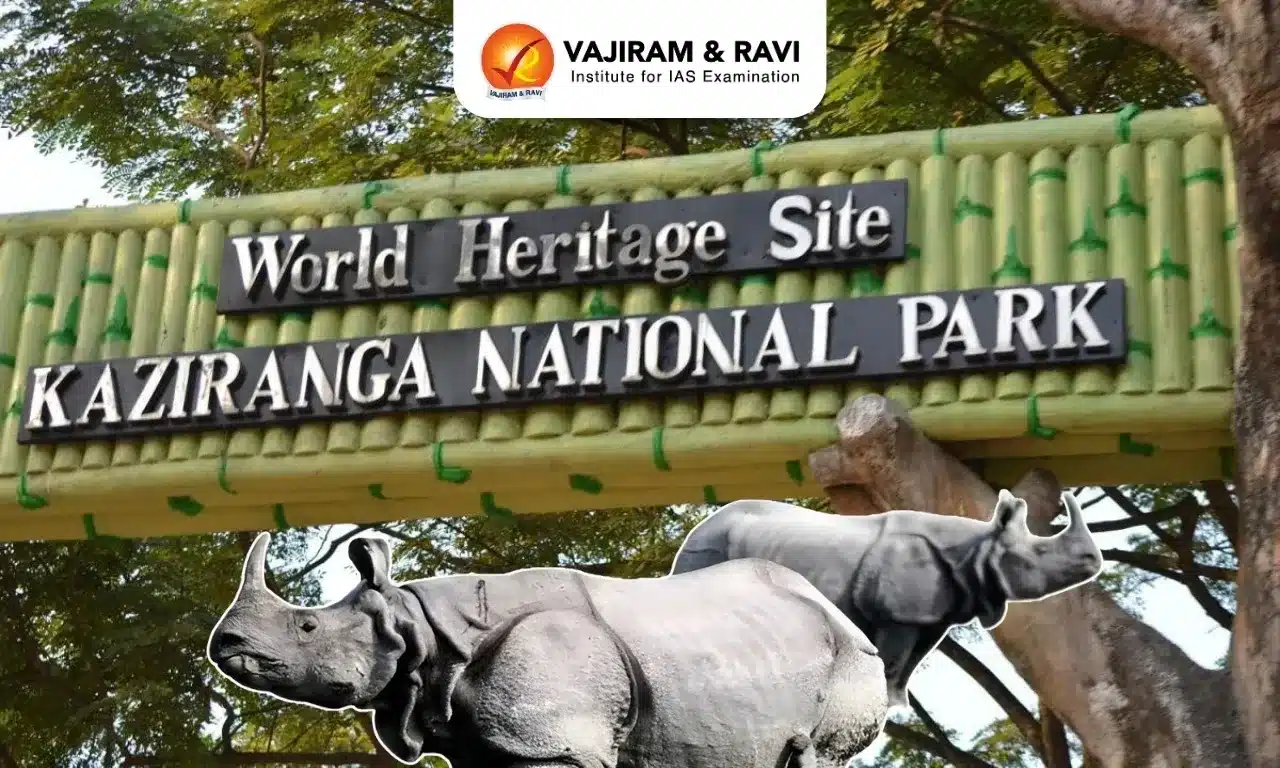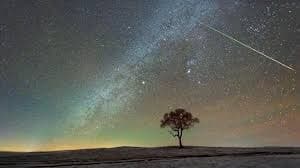Kaziranga National Park Latest News
Kaziranga National Park and Tiger Reserve has released its first Grassland Bird Survey Report, highlighting critical habitats and threatened species in the Brahmaputra floodplains.
About Kaziranga National Park
- Location: It is situated in the north-eastern part of India in the state of Assam.
- It is the single largest undisturbed and representative area in the Brahmaputra Valley floodplain.
- In 1985, the park was declared a World Heritage Site by UNESCO.
- Terrain: It is of sheer forest, tall elephant grass, rugged reeds, marshes, and shallow pools.
- Rivers: The River Diffalu, a tributary of the Brahmaputra, flows through the National Park while another tributary, Moradifalu, flows along its southern boundary.
Flora and Fauna of Kaziranga National Park
- Flora: It is primarily famous for its dense and tall elephant grasses intermixed with small swamplands. It also includes an abundant cover of water lilies, water hyacinths and lotus.
- Fauna: Many endangered and threatened species like Rhino, Tiger, Eastern swamp deer, Elephant, Buffalo, Hoolock gibbon, Capped langur, and Gangetic River dolphin are commonly found in the habitat. It is inhabited by the world’s largest population of one-horned rhinoceroses, as well as many mammals.
Highlights of Grassland Bird Survey Report
- Bird experts, scientists, and conservationists recorded 43 grassland species across Kaziranga’s three wildlife divisions.
- It reported that the Finn’s weaver (IUCN Status: Endangered), locally known as tukura chorai, is breeding successfully.
- This bird is an important indicator of grassland health and is known for building nests atop trees.
Source: TH
Last updated on December, 2025
→ Check out the latest UPSC Syllabus 2026 here.
→ Join Vajiram & Ravi’s Interview Guidance Programme for expert help to crack your final UPSC stage.
→ UPSC Mains Result 2025 is now out.
→ UPSC Notification 2026 is scheduled to be released on January 14, 2026.
→ UPSC Calendar 2026 is released on 15th May, 2025.
→ The UPSC Vacancy 2025 were released 1129, out of which 979 were for UPSC CSE and remaining 150 are for UPSC IFoS.
→ UPSC Prelims 2026 will be conducted on 24th May, 2026 & UPSC Mains 2026 will be conducted on 21st August 2026.
→ The UPSC Selection Process is of 3 stages-Prelims, Mains and Interview.
→ UPSC Result 2024 is released with latest UPSC Marksheet 2024. Check Now!
→ UPSC Prelims Result 2025 is out now for the CSE held on 25 May 2025.
→ UPSC Toppers List 2024 is released now. Shakti Dubey is UPSC AIR 1 2024 Topper.
→ UPSC Prelims Question Paper 2025 and Unofficial Prelims Answer Key 2025 are available now.
→ UPSC Mains Question Paper 2025 is out for Essay, GS 1, 2, 3 & GS 4.
→ UPSC Mains Indian Language Question Paper 2025 is now out.
→ UPSC Mains Optional Question Paper 2025 is now out.
→ Also check Best IAS Coaching in Delhi
Kaziranga National Park FAQs
Q1. In which state is Kaziranga National Park located?+
Q2. Which river passes through Kaziranga National Park?+
Tags: kaziranga national park prelims pointers upsc current affairs upsc prelims current affairs

















